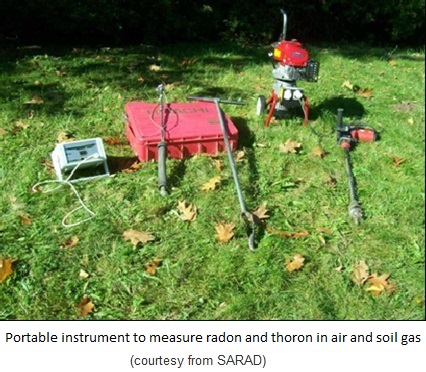4.4.5 Radon monitoring
Radon is an odorless, colorless, inert gas with isotopes of relatively short half-lives. Consequently, it must be determined using techniques that depend on the radioactive properties either of radon itself or of its decay products. Although there are several techniques for the detection of 222Rn and its short lived progeny, the majority of them use detection of the alpha particles from 222Rn, 218Po, 214Po or a combination of any of these, or detection of gamma rays arising from the decay of 214Pb and 214Bi.

Ionization chambers are designed as to allow the detection of alpha particle by measuring the ion current by means of an electrometer. These units can be operated in closed or flow through mode and, depending on the background and the chamber volume, they can achieve detection limits as low as 4 Bq/m3.
More recently, surface barrier detectors arrangements have been designed to measure radon and thoron in flow mode.
References:
Measurement and Calculation of Radon Releases from NORM Residues (IAEA Technical Reports Series No. 474)